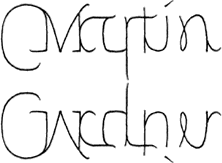Morris: Futurama – Prisoner of Benda

Smart shows have smart writers, and none are smarter than the writers of Futurama. We’ve seen a number of clever math references in Futurama and the Simpsons. Now a fully fledged theorem is written up on screen.

If I had a TV show that’s exactly what I would do. As it is I just post on Math Factor.
The theorem is by staffer and Math PhD Ken Keeler. In the show Harlem Globetrotter, and all-round genius, Sweet Clyde comes up with a theorem to solve an apparantly intractible problem.
To quote Professor Farsnworth ‘Who says pure maths isn’t useful in the real world!’
Professor Farnsworth invents a mind-switching machine. A lot of plot later nine people have their minds in the wrong bodies. Unfortunatley the machine has a limitation, it cannot process the same two bodies twice.
There seems to be no way out until Clyde and EthanTate enter. Clyde comes up with ‘Sweet Clyde’s Inversion Theorem’ and saves the day.
He shows that however many people there are, and however mixed up their minds, it is always possible to get every mind back in the right body as long as you have two extra bodies to help, and you know your maths!
This is the mess they are in:
Fry’s mind is in Zoidberg’s body
Professor’s mind is in Bender’s body
Bucket’s mind is in Amy’s body
Leela’s mind is in Professor’s body
Emporer’s mind is in Bucket’s body
Hermies’ mind is in Leela’s body
Zoidberg’s body is in Fry’s body
Bender’s mind is in Emperor’s body
Amy’s mind is in Hermies’ body
Take a moment to solve this yourselves. Remember you need to get each mind back in the right body by repeatedly switching the minds of two bodies. No switch can be repeated. You cannot switch two of the original nine bodies because we have lost track and assume those combinations have already been used. So every switch must involve Clyde and/or Ethan.
Read on for the solution.



 Martin Gardner died this week.
Martin Gardner died this week. mathbun.com
mathbun.com